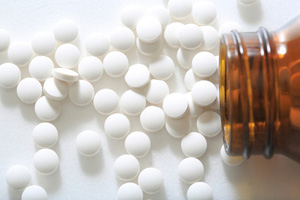Is a Stimulant Epidemic Next?

As word of the opioid crisis continues to trouble and intrigue the country, drug experts are anticipating a new epidemic on the horizon. Stimulants like cocaine and methamphetamine are known to be abused but joining them are prescription stimulants like Ritalin and Adderall. The supply of both illegal and legal stimulants is abundant and cheap, making these potent drugs the next likely source of an epidemic crisis.
Opioids continue to draw the majority of the attention, while stimulant abuse rapidly catches up. National law enforcement agencies testify that for every single kilo of heroin (an opioid), 15 kilos of stimulants are seized. In addition, government sources report stimulant use is on the rise. In fact, according to these same sources, stimulants are now utilized more than opioids by users seeking to “get high.” Opioids still account for more deaths by overdose in the United States, but according to the Centers for Disease Control (CDC) overdoses due to stimulants had risen as much as 30 percent according to the latest statistics.
Opioids produce an ecstatic, yet peaceful high which makes users sleepy, while stimulants energize, producing concentration and wakefulness which means each epidemic will affect different users. Of course, there is the opportunity for overlap with opioid users needing stimulants to function in their daily life.
The abuse of stimulants causes greater negative impact on the body of users. Stimulants cause damage to the cardiovascular system, causing high blood pressure, heart disease, stroke, lung disease, and brain damage. And in addition to irreversible damage, unlike opioids, there is no rescue drug available for stimulant overdose, nor is there one to curb stimulant cravings. To that end, the National Institute on Drug Abuse (NIDA) is currently researching the development of medications to aid those who are abusing stimulants as the demand for addiction treatment services continues to rise, even doubling in some parts of the country, especially those in regions with easy access to methamphetamine entering the country from Mexico.
The rise in meth’s inundation from Mexico came on the heels of Congress’ 2005 measures to make acquisition of the key ingredient pseudoephedrine (found in over-the-counter cold medicine). Congress’ action, while virtually ceasing the domestic production of meth, saw production move to Mexico, where its made with swimming pool cleaner P2P (phenyl-2-propanone) which results in a purer, more potent meth that is cheaper to produce, sell, and ultimately abuse. The purer form also results in greater frequencies of psychotic breaks.
Along with meth’s consistent flow into the country, cocaine supply is also high, a result of record crops in Columbia because of a government deal with farmers to buy coca plants if farmers promised to grow different crops in the future. Columbia is the source of nearly all cocaine seized by authorities in America.
And on top of the illegal stimulants being abused comes the legal stimulants in play, prescription drugs like Ritalin and Adderall (most often prescribed for attention deficit hyperactivity disorder) are being used and abused at staggering levels. While these prescription drugs effectively treat ADHD, their misuse (which includes using a drug incorrectly or using a drug not prescribed to you) continues to rise. SAMHSA (The Substance Abuse and Mental Health Services Administration) estimates that nearly 2 million individuals misuse prescription stimulants with the highest number of users between the age of 18 to 25. In addition, misuse of these prescription stimulant is not without risks – like its illegal counterparts, these drugs increase blood pressure and the chances of having a heart attack, stroke, or other cardiac event as well as the potential for addiction.
Stimulant abuse is very real and has the potential to be just as dangerous or even more so than the current opioid crisis.
